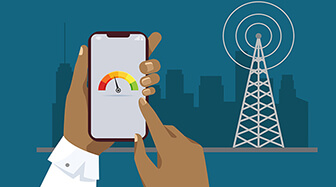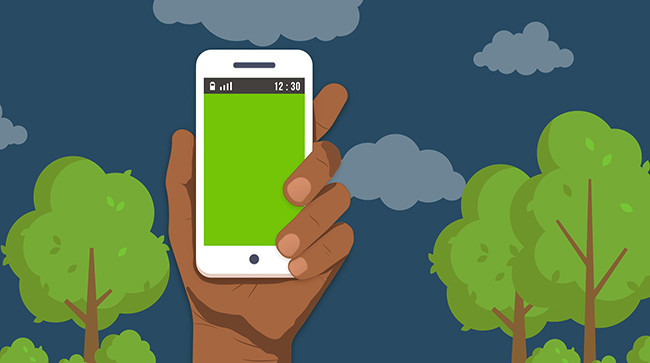
14 Effective Cell Phone Signal Booster Solutions
14 Effective Cell Phone Signal Booster Solutions
A cell phone signal booster can improve your call quality and boost your signal so that you no longer experience dropped or distorted calls. But where do you begin? With so many varieties and brands on the market, it can feel overwhelming selecting the right booster for your needs. We have compiled a list of the top 14 Cell phone signal boosters to help you identify which signal booster is best for you.
1. Cell Phone Signal Booster
A cell phone signal booster (Also called an amplifier or repeater) is a powerful device and is very effective in amplifying the signal. Amplifiers are available in a wide variety of models to fit your needs, and can be used in the home and office, as well cars, boats, caravans… you name it!
The signal booster takes an existing weak cellular signal from the outside and amplify 4G & 3G LTE signal up to 32X for any phone and any carrier.
- Improves 4G LTE & 3G for any phone, hand held device, hotspot, etc. on any carrier
- Amplifies cell phone signal to AND from the cell tower
- No need to be connected to the internet or wifi to work
- Fully accepted and approved by (Country specific accreditation)
Africa’s Favourite Cell Phone Signal Booster for Homes
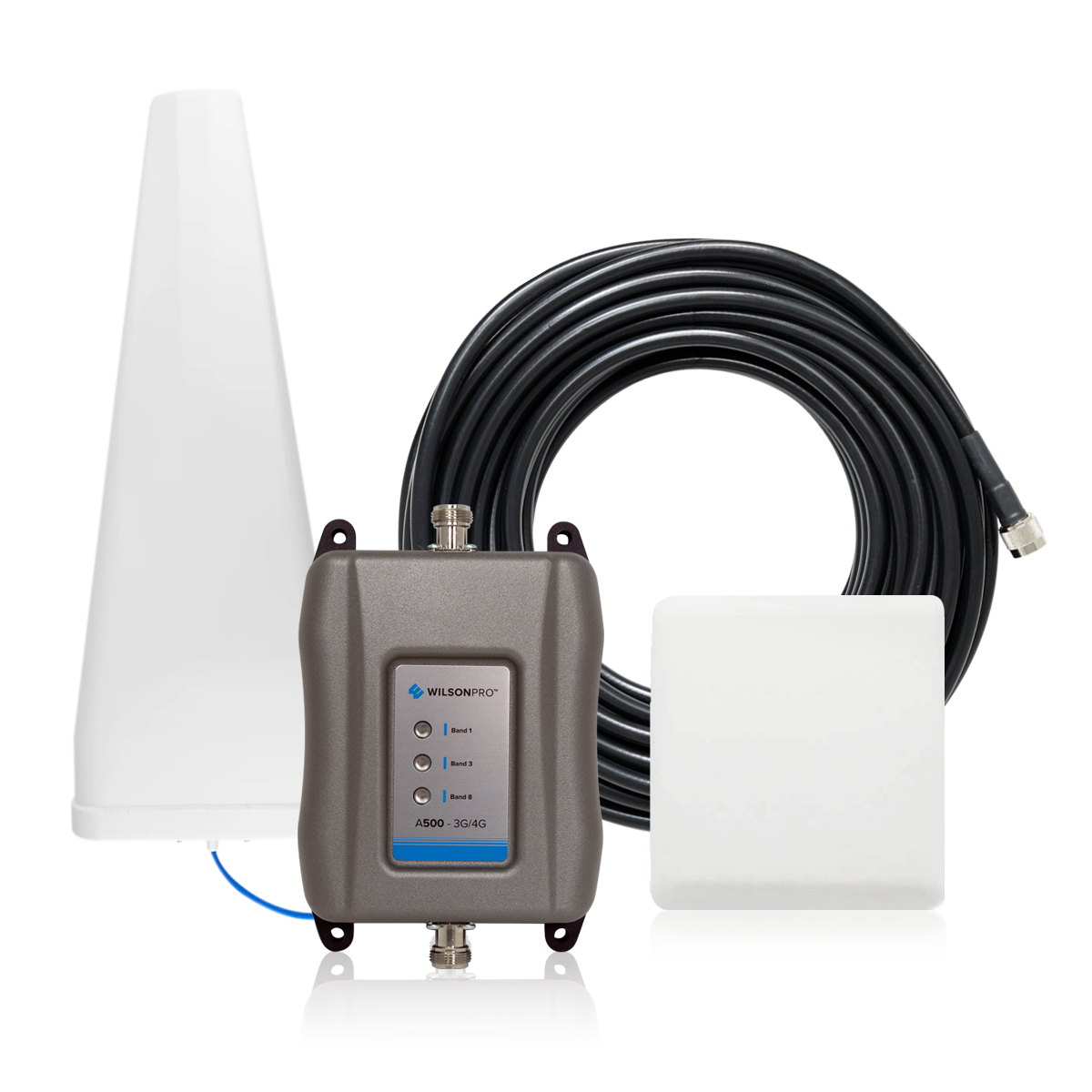
- Whole home coverage: Improves 4G LTE & 3G coverage up to 500m² (most homes).
- Most popular home booster: Trusted by hundreds of thousands of people across rural & urban America. Now that same power is available in Africa.
- High-powered range: Up to +70dB gain for 32X stronger signal.
The WilsonPro A500 has been the most recommended home booster four years in a row for good reason. It's a dependable performer that covers most homes for better service.
Under absolute best conditions, the A500 covers up to 500m² with great outside signal and an open-spaced layout home.
If you're getting some distorted reception and your home or office meets the size specifications, we'd recommend to start with this first since this tends to be, in general, a great fit for most homes.
THE BEST Cell Phone Signal Booster for Car
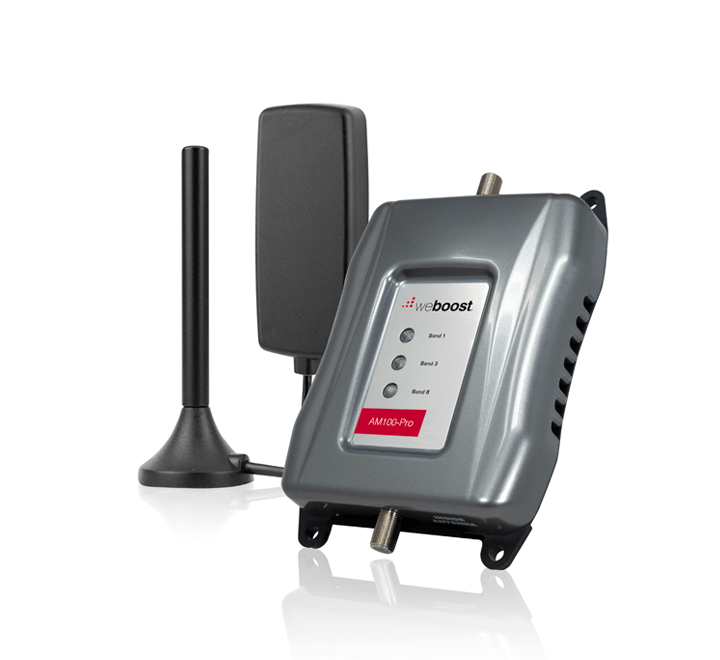
- Strong mobile coverage: Get reliable 4G LTE & 3G on the road.
- Multi-device support: Supports up to 4 cellular devices.
- High-powered range: Up to +50 dB Gain
The weBoost AM100-Pro is the most popular & recommended car signal booster in Africa.
The outside antenna picks up the available cell phone signal. An inside antenna (usually Velcroed to the driver seat) broadcasts signal inside. You have to be about an arm's length to get the boosted signal, so it's best for your typical sedan, truck, or SUV.
This device is perfect for busy businessmen and women who need stable signal on the go and for adventure seekers who enjoy travelling to more remote areas.
THE No. 1 Cell Phone Signal Booster For Commercial Office Buildings
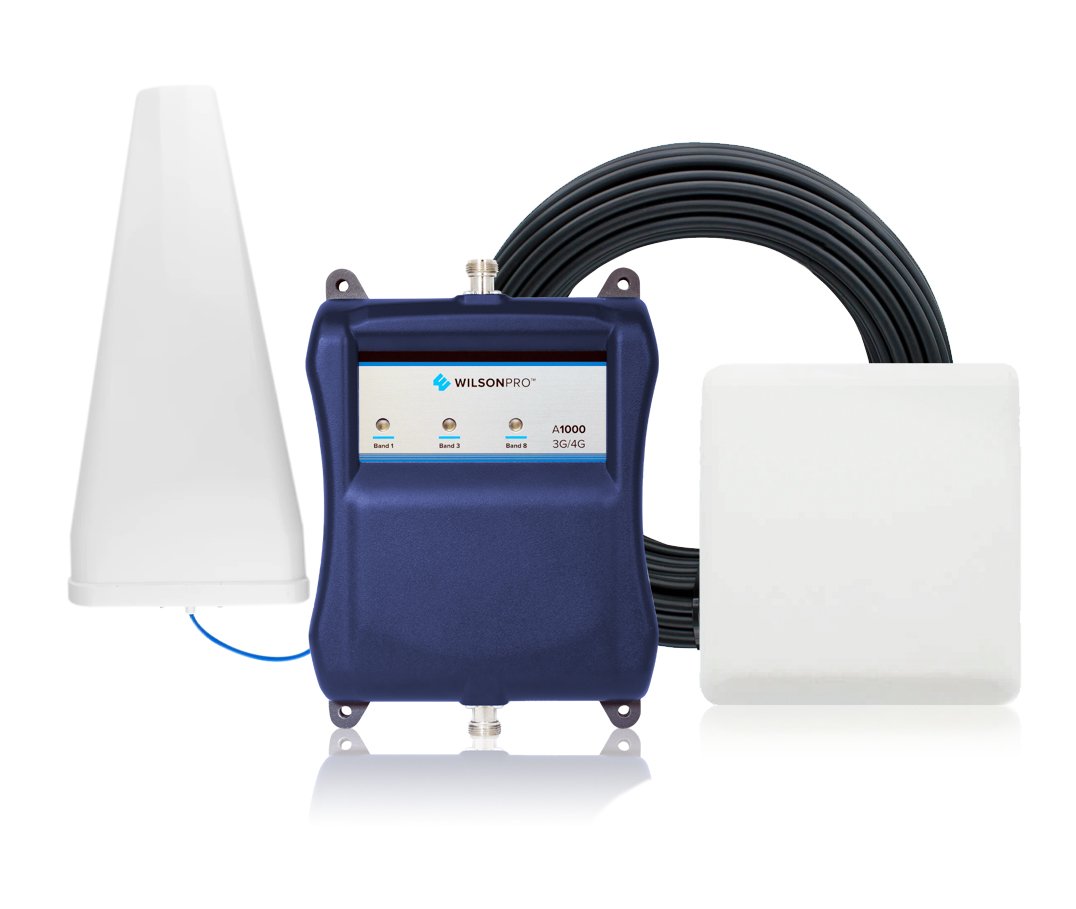
- Power small medium business solution: Boosts Voice, Text Messages, 4G LTE & 3G Data
- Affordable pro signal booster: Coverage up to 1000m² per boosters.
- Up to +74 dB Gain.
This device works well for office buildings, factories, and warehouses and can easily be daisy chained to cover much larger areas. This powerful model will cover your commercial buildings with coverage up to 1000m² per amp.
It’s important to note that the level of signal improvement is dependent on the signal strength outside. In general, if you are picking up signal outside your house but not inside, then a cell phone booster will work, because building material is the number 1 cause of poor cell phone signal.
WiFi calling uses your broadband landline internet instead of cellular service to make calls and connect to the web.
02. Use Your WiFi Network
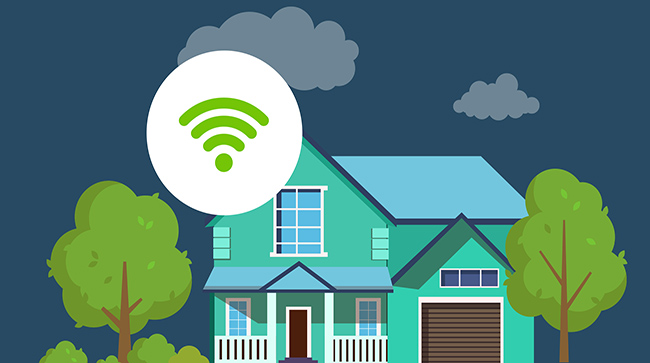
Many major network providers support WiFi calling on most newer smartphones such as Apple iPhone, Samsung Galaxy, Google Pixel, LG phones, and other iOS & Android devices.
It is important to note that if your internet speed is unstable, this will only make it worse, as it will need to support another device on its strained bandwidth.
03. Femtocell
A femtocell (microcell or network extender) is equipment that depends on having a broadband landline internet to convert landline internet to cellular signals and vice versa.
It’s like having a personal cell phone tower.
While femtocell is the proper & broad term, each network likes to brand their own femtocell names.
These devices can be costly along with a possible monthly subscription fee on top of your landline internet bill. Also, you'll also need a minimum speed up to 10 Mbps download & 5 MB Mbps on your landline internet for it to work decently.
Pro’s:
If you're a long-time subscriber with continual reception problems, contacting your carrier may result in a free or discounted femtocell.
Usually, long-time customers in an area with known cell phone problems have more success with getting a free or discounted unit.
Con’s:
Network providers are moving away from femtocells because they'd rather have customers use Wifi calling. That means no more discounts or devices in the near future as network operators its not worth the costs involved.
04. Mobile Hotspots
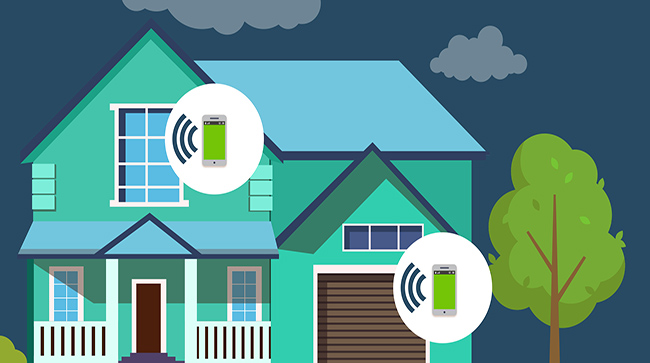
Mobile hotspots (also known as 4G routers, mobile WiFi routers, LTE modems, etc.) are cellular routers that use 4G data instead of landline Wifi to connect to the internet.
Most iOS and Android smartphones have the ability to become hotspots for other devices, allowing users to share their data with others or receive signal from another user nearby.
Because mobile hotspots rely on the same cellular network as your phone, they won’t actually strengthen your signal unless you choose a model with a powerful external antenna. Routers are unable to boost signal, whereas cell phone boosters amplify incoming signals up to 32X.
05. Find a Cell Phone Tower Near You
"How do I find a cell tower near me?" That’s a question we often get at Bolton Technical.
After all, knowing the closest network tower location a mile or two away from your house helps tremendously when it comes to getting the best reception. The closer your phone is to the tower, the better the signal strength.
Here are some methods in locating the nearest cell tower:
Apps
Apps can provide a simple way of finding your closest network towers. They use your location and then map out the closest tower. It’s hard to confirm their accuracy, but it's a handy tool to have, as it gives you a rough overview of where the nearest tower is located.
OpenSignal (Recommended): For iPhone | For Android
Cell Towers (Locates Signal for All Networks): For Android
Network Cell Info (Highly Recommended): For Android
AntennaPointer: For Android
OpenSignal has a compass that points in the direction of your network's cell tower and has a cell tower map.
Both Cell Towers and Network Cell Info are powerful, detailed, and user-friendly enough to show the best cell service in your area. They are highly recommended apps used by most professionals.
While these apps don’t exactly show you how to boost network signal on Android or iPhone, they’re fairly accurate in determining the general location of your tower and providing information about the quality of signal strength in your area.
06. Websites (A little more technical)
This website tool is free to use and works in most countries around the world. You simply put in your postal code and the site will display all the nearest Cell phone towers to your location. The website is fairly easy to use but can be a little tricky to navigate at first. But once you do, it is a great tool for finding Towers.
Cellmapper provides relatively up to date information, but there is no way to verify its accuracy. Service providers are constantly adding and subtracting service on cell sites, this makes it challenge to provide accurate information.
However, this is a powerful tool that we recommend you try out.
DIY: Use Your Own Phone (Recomended):
Your smartphone is a great tool to find your cell tower.
It all begins with cellular signal strength or dBm (decibel-milliwatts).
Cell phone signals are radio frequency waves measured in dBm (decibel-milliwatts). All cellular devices operate between -50 dBm to -120 dBm.
-50 dBm is considered a strong signal (full bars). -120 dBm is considered weak signal (dead zone).
Any number in between represents the scale from good to poor coverage. The closer to - 50 dBm, the better the signal. The closer to -120 dBm, the worse the signal.
However, the number of bars on your phone are subjective to the phone manufacturer and carrier. Repeat: subjective.
There's no industry standard and practice to match dBm values to the number of bars.
What could be 1 bar on an Apple iPhone for MTN could be 2 bars on a Samsung Galaxy for Vodacom or 3 bars on a Google Pixel for Cell C DESPITE performing at the exact same speeds!
This might explain why you sometimes have 2-3 bars and can’t keep a connection, while other times you have 1 bar and have blazingly fast speeds and service.
That’s why you can't trust the number of bars on your phone too much because the number of bars is subjective across all devices and carriers. But dBm readings are not subjective. Just plain math and truth.
OUR RECOMMENDATION:
Find dBm readings on your phone.
Walk around your house inside and outside.
The number closest to -50dBm s where you get your best signal.
So how do you find dBm reading on your smartphone? It’s called field test mode, and it’s a native function on your phone.
How to Access Your dBm Signal (Field Test Mode):
For iPhone Users
Starting with iOS 11 and 12, Apple has hidden dBm readings in iPhone field test mode. However, depending on your iPhone chipset (Intel or Qualcomm) and your carrier (MTN, Vodacom, Cell C), there’s a slim chance to find your dBm readings through this workaround.
MTN or Vodacom wth iPhone with Qualcomm chipset (iOS 11 & 12)
Dial *3001#12345#*
Tap 1xEV-DO.
Your dBm is read as RX AGC0.
For any iPhone pre-iOS 11
Dial *3001#12345#*
Swipe down notifications bar.
Your dBm is in the upper left-hand corner of the screen.
If you’re unable to find any of these options during your field test mode process, you most likely have an incompatible carrier and chipset. The next best method is performing a speed test around areas inside and outside your home. But once we crack the code on dBm readings on your iPhone, we’ll update as soon as possible.
For Android Users
Field test mode on Android varies by phone model and Android OS version. However, it is generally found under the Settings menu.
Typical sequence:
Tap Settings
Tap About Phone
Tap Status or Network
Tap SIM Status
Your dBm is under Signal strength
Once you have your dBm reading through field test mode or app, walk around inside and outside the perimeter of your home. Make note which areas get the best dBm reading. This shows you the general direction of your cell tower and which rooms inside your home have the best reception.
07. Minimize Interference
The great thing about cellular or radio frequency waves is that they can reach kilometres in the distance to deliver calls, texts, emails, and internet.
The are many external factors that can disrupt your signal. If you are able to avoid these obstructions your signal should improve and become more stable.
But for people in outlying rural areas, this is not always possible due to natural obstructions. It can also be challenging urban areas, where there are high rise buildings and materials causing the signal to weaken. Not to worry, signal boosters can assist by amplifying the signal by 32X.
Here are the main causes of poor cellular signal:
1.Your Distance from your nearest cell phone tower
Your distance from your nearest cell phone tower can affect the signal strength. Being closer to the tower, will generally give you better signal, while being further away can distort it.
2.External Obstructions
There are many things that can disrupt your signal: trees, hills, mountains, valleys, dense foliage (especially pine cones), swamps, and any large or tall object.
3.Building Material
The layout and building material of your house may cause poor indoor cell phone signal. Anything metal–roof, wall, studs, lining, etc.–will tackle your incoming cell phone signal. Other disruptors are low-e (energy-efficient) glass, concrete, wood, and other signal-blocking material.
Open floor plans generally have better signal than multi-room layouts. Thick walls make it harder for the signal to reach your device.
4. Internal Interference
Electronics can create RF interference. Same with anything metal (again!) and magnetic can affect cell phone signal.
5. Weather & Cosmic Events
Weather can disrupt your signal. Rain, snow, and thunderstorms are fair game. Even solar flares have some effect.
So, what can I do to improve my signal?
Reduce the interference between your cell phone and the tower:
Move outside.
Move to an open window.
Go up a level. Usually the lower down the level of the home, the worse the signal gets.
Reduce interior clutter, especially metal & solid objects.
Open up your garden area, trim any tall trees & bushes.
All these tips should help get you better reception.
The fewer obstructions between your cell phone and the nearest cell tower, the easier the two can keep communicating. Cellular signals are very sensitive by nature. Sometimes, a slight move here or there can drastically change reception.
08. Check Your Phone Settings
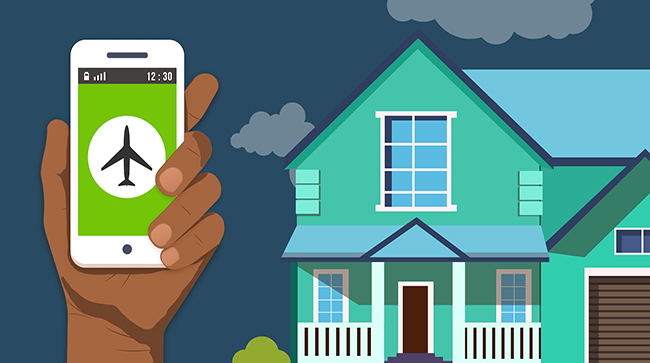
Your phone needs to do many things.
Multi-tasking tends to build up, leaving some lingering issues.
Some best practices:
- Switch Airplane Mode off and on to reconnect to the cell tower.
- Ensure your Firmware is up to date
- Restart your phone.
- Check that your Cellular data is turned on under Settings.
- Check your SIM card for any damage.
09. Check Your Phone Battery
Connecting to a cell tower takes a constant supply of power, so if you’re low on battery, your phone might not have enough energy to find a signal. That's why most smartphones have a battery-saving mode. The following best practices should help conserve battery power:
Turn off hardware options when not in use.
decrease screen brightness.
Close apps working in the background when unused.
Disable push notifications.
Keep the phone away from extreme temperatures.
But if you still find your cell phone lacking power before the end of the day, we'd recommend a portable battery charger. FYI, phones older than 2-3 years tend to have degraded batteries and components, so that might affect performance.
10. Don’t Block Your Cell Phone Antenna
Most mobile phones in the late 90s and early 2000’s had external antennas. They were a crucial part of the device that gathered and sent signals to the cell tower. Modern day smart phones antenna’s is now designed to be tucked inside the phone. This give the smart phone a sleek appearance but can be problematic for increased reception because those interior antennas still need to do the same job. By holding your phone in landscape position (sideways), your hands may be effectively blocking your antenna from the cell tower. Although the newer smartphones have designs to combat this problem, a smartphone in a rugged case and gripped with both hands can occasionally give you the no-signal burp. To rectify this, hold your phone in an upright position with your antenna free of a blockage. It should help increase the flow of the signal. Or consider going hands-free with a Bluetooth headset, and you’re bound to get better service. Your cell phone case can also prevent your antenna from capturing the signal.11. Find Some Me Time
Many cell phone users connect to the same cell phone tower. But what happens when they all connect at the same time? Chaos. Tower congestion is a real pain at crowded public events. With everyone uploading images and content to social media platforms, it's bound to overwhelm the cell tower or cell site. It all leads to the following problems:- Dropped calls
- Unstable call quality
- Slow internet
- Slow uploads & downloads
- Stuck text messages
- Spotty service
12. Get a New Phone
If your smartphone is about 4-5 years old or newer, you can skip this part. But for those still hanging onto your Blackberry, Windows Phone, Palm, flip phones, brick phones, etc.– it’s time to move forward. When phones get old, they don’t perform as well as they used to. Technology is changing and improving, newer phones support newer technology that may have that reliable coverage and fast internet you need. Change is difficult but as things progress its imperative to keep up to date.13. Change Network Providers.

14. Go Skyward.
Look to the skies. Satellite internet providers like ISurf, Vox, and VSAT provide internet in areas with slow or no high-speed options. This can be very costly and speeds are slower in comparison to other options available.
FAQ
1. How do I find if Cell C, Vodacom or MTN serves my area?
2. How do I test Cell C, Vodacom, MTN or any other carrier’s speed? 3. Who has the best cell phone coverage & service?According to Business Tech, MTN has the best network quality scores and performance. According to the article: MTN had the highest average download speed at 26.95 Mbps, followed by Vodacom on 26.78 Mbps, Rain on 21.67 Mbps, Telkom on 19.83 Mbps, and Cell C on 15.56 Mbps.
However, the most important thing is where you’re going to be using your phone most of the times and if there’s a carrier cell site nearest to you.
4. What is the best mobile phone for poor reception areas?From Business Tech's Column they say its Samsungto quote them: "While its market share dipped marginally to 32% in 2018, Samsung’s broad portfolio, especially in the entry-level and budget segment, helped it sell almost twice as many smartphones as its nearest competitor.”
5. How can I make the antenna signal stronger?
Technically, you can’t make your antenna signal stronger. It’s an internal component within the phone.
Charlatan products like cell phone antenna cases, stickers, and apps claim to make a difference, but they won’t make a noticeable change. DIY hacks and homemade antennas may slightly help, but you risk damaging your phone.
While you can’t make your antenna signal stronger, you CAN make the incoming signal to your antenna STRONGER. Keep reading.
6. How do I improve mobile strength? Which method is best?
If you already have landline internet and have acceptable speeds–up to 10 Mbps download & 5 Mbps upload–using WiFi calling is the best method to get better internet, talk, text, emails, and video streaming.
If you don’t have landline internet and don’t have access to it, a cell phone signal booster is also a great device because it amplifies a weak signal and then rebroadcasts the new signal into your home, office, or vehicle.7. What is dBm?
dBm (decibel-milliwatts) is a unit of measurement to express the power, in this case, of cellular signals and radio frequency waves. All cellular devices operate between -50 dBm to -120 dBm. Closer to -50 dBm is good signal. Closer to -120 dBm is poor signal.
8. What is a good signal strength for a cell phone?
9. How will 5G affect my cell phone service?
It won’t for a while. While 5G launched in 2020, 4G LTE will be around and is still being built out worldwide. In SA, largescale commercial rollout of 5G network technology will take a little longer than initially anticipated.
5G isn’t expected to reach mainstream nationwide until 2030.
10. Who are you and how can you help me?
Bolton Technical is a leading provider of cell phone signal boosters, devices that amplify 4G & 3G LTE for any phone with any carrier for home, office, or car. We’ve boosted over 1,000,000 m² of signal for homes, buildings, and vehicles across America and Canada and now that same power is boosting signal across Africa.
- Free consultation (ask us anything) with our African-based customer support.
- Reliable shipping to Major African cities.
- 30-day money back guarantee. You want to make sure you're satisfied.
- Email us or Call us today
- Our goal is simple: keep people connected. Ask us anything and we'll be glad to help.








